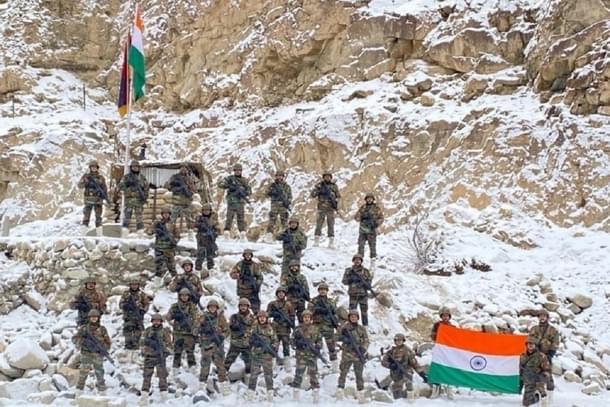Newsletters
@Evening: 🪖 Three Years After Galwan Clash, Here's What's Changed
Karan Kamble
Jun 15, 2023, 08:08 PM | Updated 08:08 PM IST
Save & read from anywhere!
Bookmark stories for easy access on any device or the Swarajya app.
🆙 Troop strength, LAC infra and more

Three years have passed since the clash between the Indian and Chinese troops in the Galwan Valley of eastern Ladakh.
The Galwan clash claimed the lives of 20 Indian Army soldiers from the 16 Bihar Regiment and an undisclosed number of Chinese soldiers.
Reportedly, the Chinese casualties numbered between 40 and 45, while the Chinese government officially acknowledged only three.
The clashes sparked the ongoing standoff, which has now reached its fourth year, on the Line of Actual Control (LAC).
What's different now? Five things have changed in Eastern Ladakh after the clash, as detailed here in Swarajya. Let's take a quick look here, on our evening email:
– Troop presence strengthened
The Indian Army earlier guarded the eastern Ladakh region with only a division worth of troops (15,000 soldiers) belonging to the Leh-headquartered 14 Corps.
Ever since the clashes, the troop strength has tripled to more than two divisions (50,000 soldiers), alongside their supporting elements.
A Rashtriya Rifles force was also inducted for rear-area security.
– Re-orientation of Strike Corps
Until 2021, India's three strike corps (1, 2, and 21 Strike Corps) were predominantly oriented towards Pakistan in the plains sector.
After the standoff, the Army HQ decided to re-orient its Bhopal-headquartered 1 Strike Corps against China in the northern sector.
– Induction of armour, mechanised, and supporting assets
From the earlier four to five armour regiments, the Indian Army has now deployed more than 10 to 12 armour regiments in the area.
Repair, recovery, and supporting elements were also inducted.
Plus, additional artillery regiments operating the newly inducted M-777 Ultra light howitzer and K-9 Vajra-T tracked howitzer were brought in.
– Operationalisation of cutting-edge tech
India inducted not only Israeli Heron drones for long-endurance medium-altitude recon but also handheld small drones from private Indian companies, such as Idea Forge's Switch UAV and Nagastra-1 loitering munition.
Furthermore, the Indian Army became the first major army of the world to operationalise SWARM drones, which came from the Bengaluru-based startup NewSpace Research.
– Building border infra
The capital budget for the Border Roads Organisation (BRO) grew from Rs 3,500 crore in 2022-23 to 5,000 crore this year.
The last three years have seen a renewed push for the construction of new helipads, advanced landing grounds, roads, tunnels, and bridges.
New habitats for more than 22,000 troops and 450 armoured vehicles have been built.




